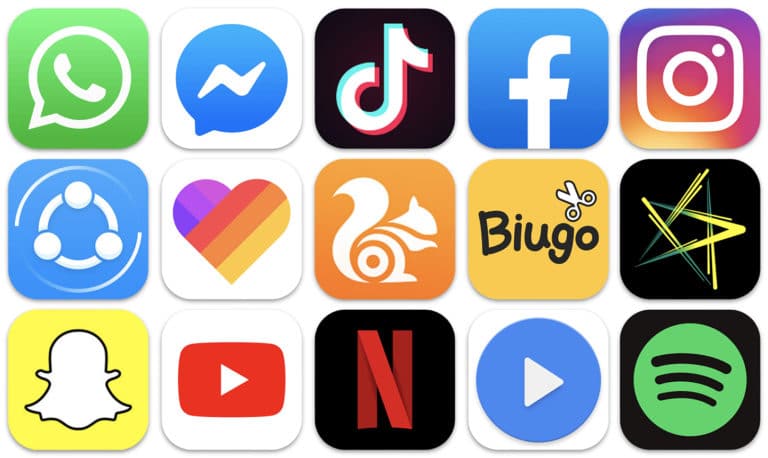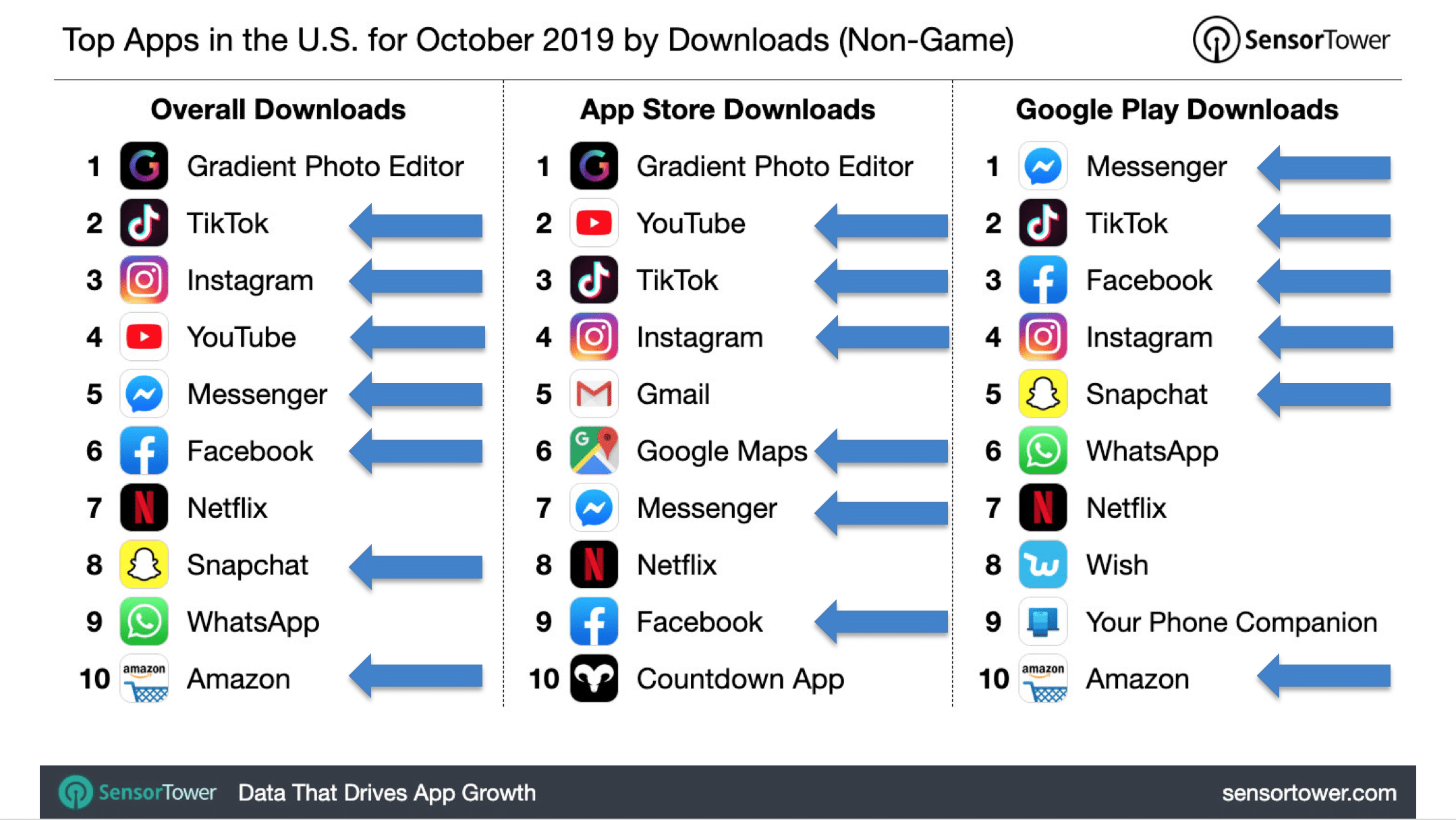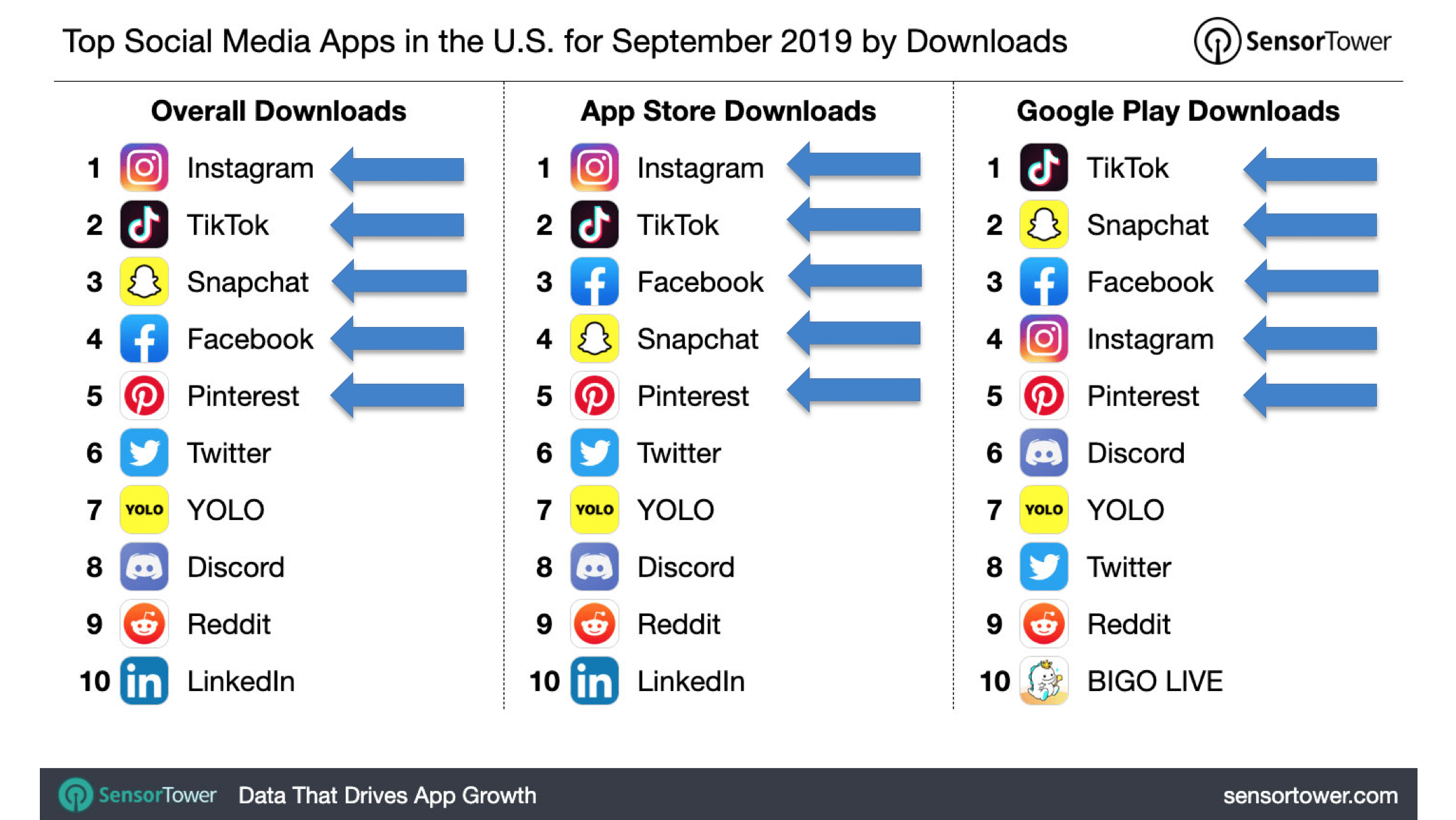
Data Point of the Week is AR Insider’s dive into the latest spatial computing figures. It includes data points, along with narrative insights and takeaways. For an indexed collection of data and reports, subscribe to ARtillery Pro.
It’s no secret that mobile AR is where the scale is today, given 3 billion global smartphones. As for the segment that’s AR-compatible, the common industry rally cry is that there are 1 billion AR-enabled smartphones. That figure applies to ARkit and ARCore-compatible smartphones.
But if you pan back to other platforms, such as Snapchat’s Lens Studio and Facebook’s Spark AR, the AR-compatible universe is actually a lot larger (figures below). But the number that matters most is the global active users across these platforms, which now stands at 334 million.

Supporting AR’s penetration is data from Sensor Tower that show top U.S. mobile app downloads in October. What struck us is that seven of the top ten apps feature AR to varying degrees. This is a U.S.-only list (and non-gaming) but is still a good proxy for AR penetration and exposure.
Searching elsewhere in Sensor Tower’s library, we found that 5 of the top 5 social app downloads feature AR. This makes sense, as AR has found fertile ground in social media. This is because it piggybacks on — and enhances — an existing use case of capturing and sharing selfies.
As we examined last week, this is a key AR success factor. Also represented in the 2020 predictions of our research arm ARtillery Intelligence, this notion of AR “training wheels,” is critical. Snapchat in particular has leaned into this approach as AR aligns with its camera-first ethos.
It’s also worth noting that these rankings exclude Web AR, where there’s lots of action, ARkit and ARCore have the most functionality but also friction and “activation energy.” Web AR is the inverse. Snapchat and Facebook are meanwhile walled gardens, but substantial ones.
For example, Snapchat is the AR engagement leader with more than 142 million daily active AR lens users, 15 billion lifetime lens engagements, and 500,000 lenses created. Snapchat users also activate AR lenses 30x per day on average, which is a key active usage metric.
Somewhere between all that is AR-as-a-feature, which is when brands and/or developers will infuse AR capabilities within a given app, rather than create standalone AR apps. This is usually advisable, as we’ve learned from successful implementations like Houzz and Pokémon Go.
Benefits include meeting users halfway by letting AR piggyback on existing apps… especially when the given app is a popular one, such as the AR View feature in Amazon’s main app (see rankings above). This once again invokes the “training wheels” approach to ease users in.
Regardless of all of the above platform fragmentation and growing choice for developers (which is both good and bad), there are lots of AR confidence signals as we enter 2020. Now we can add to that list the fact that AR is delivered alongside 70 percent of the top mobile apps in the U.S..
For deeper XR data and intelligence, join ARtillery PRO and subscribe to the free AR Insider Weekly newsletter.
Disclosure: AR Insider has no financial stake in the companies mentioned in this post, nor received payment for its production. Disclosure and ethics policy can be seen here.
Header Image Credit: Sensor Tower


